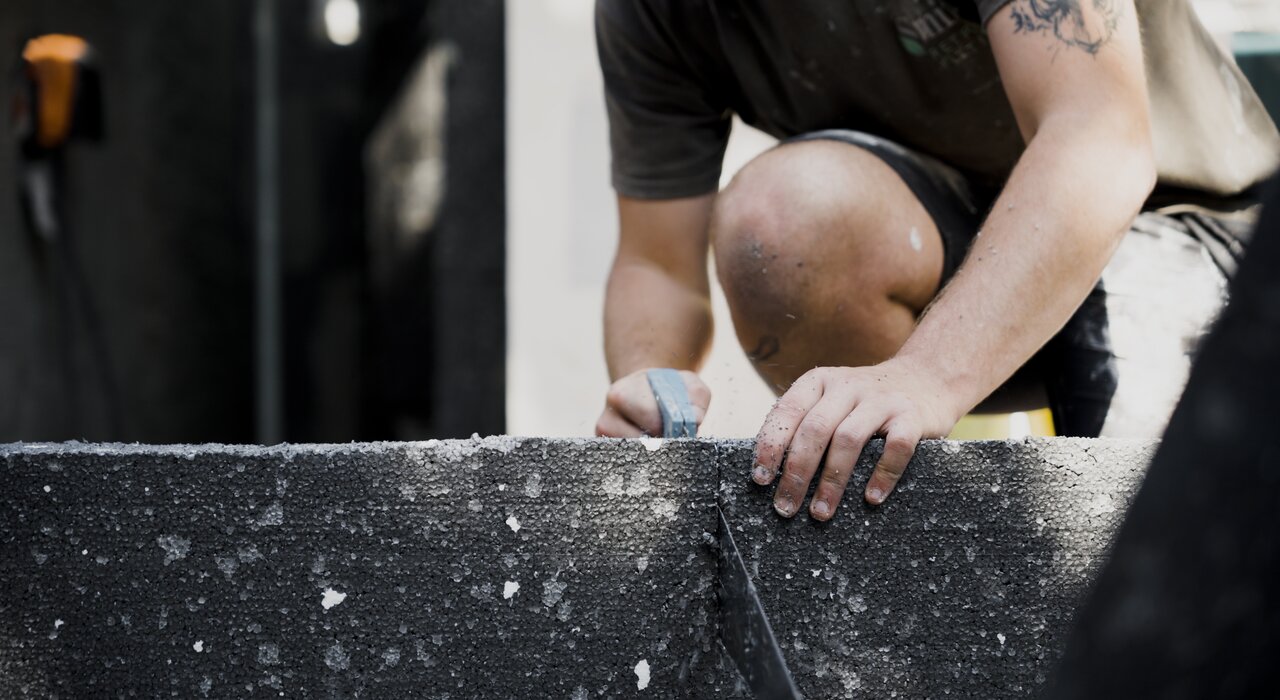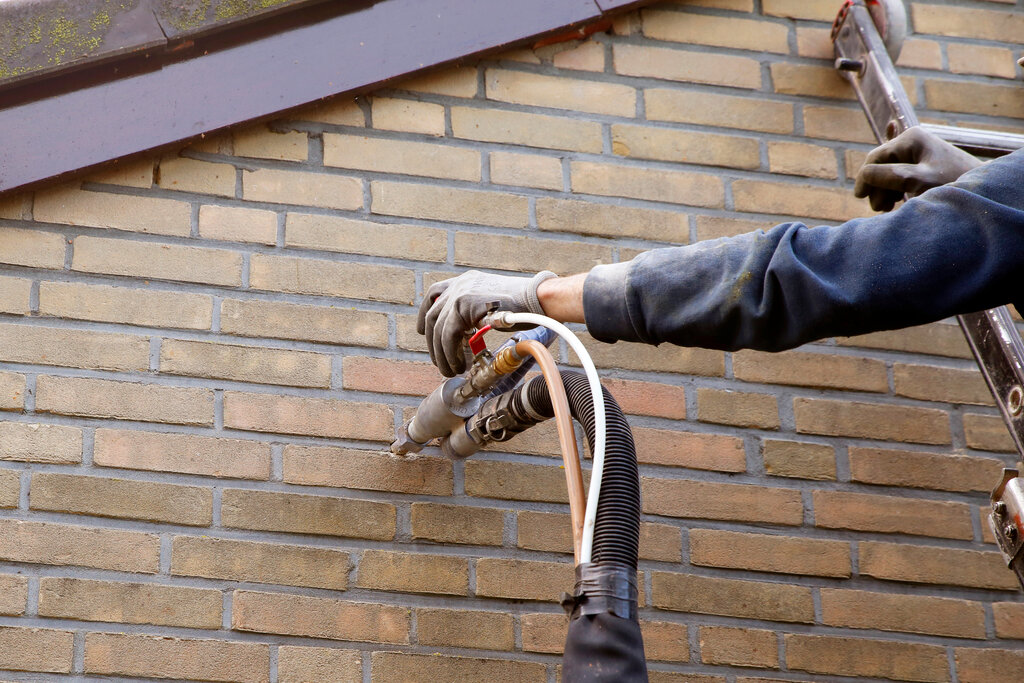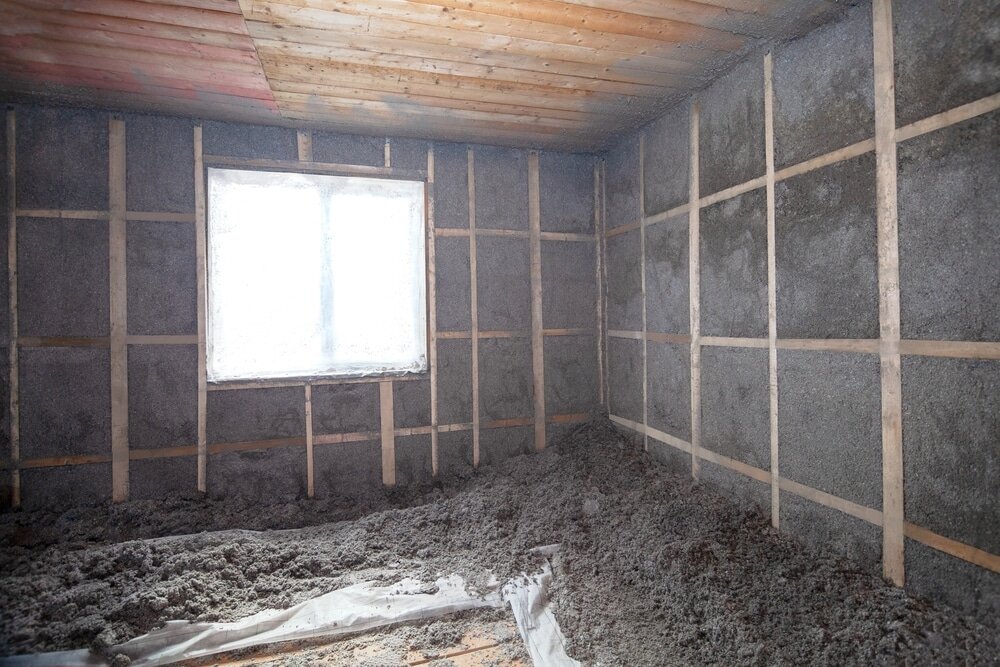
Insulation is crucial for maintaining a comfortable indoor environment and, more importantly, reducing the amount of energy required to heat or cool our homes. It plays a pivotal role in energy efficiency, which subsequently leads to monetary savings and reduced carbon footprints. This blog delves into the savings in terms of £ (pounds) and kWh (kilowatt-hours) of three prevalent insulation types: external wall insulation, cavity wall insulation, and internal wall insulation. External wall insulation (EWI) is a system that involves fixing a layer of insulation material to the outer surface of a building and then covering it with a protective layer, typically a render, brick slips, or cladding. It's particularly useful for homes without cavities or those with solid walls, but it can be applied to almost any type of building.
Savings of EWI
- kWh: On average, EWI can save between 7,000 to 9,500 kWh annually for a typical semi-detached house.
- £: These energy savings equate to up to £710 annually, based on an average energy cost of roughly 30p per kWh.
Materials:
- Insulation Boards: Typically, these are made from expanded polystyrene (EPS), mineral wool, or phenolic foam.
- Renders and Finishes: These can vary from simple silicone or mineral-based renders to more elaborate finishes that mimic brick or stone.
Advantages:
- Aesthetic Enhancement: As EWI provides a fresh facade, homeowners have the opportunity to give their homes a modern or refreshed appearance.
- Weather Protection: The system also offers protection against the elements, safeguarding the building's structure.
- Noise Reduction: The additional layer can provide acoustic benefits by reducing outside noise. Insulation materials like Rockwool have high STC ratings and an NRC of 0, which essentially means that all sound is reflected.
- No Reduction in Interior Space: As the insulation is on the exterior, there is also no loss of space inside the home.
- Potential Property Value Increase: A well-insulated home is a selling point, and with the added bonus of a refreshed exterior, it may boost the property’s value.
Considerations:
- Installation Time: Depending on the size of the property, installation might take several days or weeks.
- Upfront Cost: EWI tends to be more expensive than other insulation methods, but the long-term savings can justify the initial investment.
- Planning Permission: In some cases, especially for properties in conservation areas or listed buildings, you might need planning permission.
Maintenance:
EWI systems are generally designed to be long-lasting, with a life expectancy of over 25 years. We work with EWI Pro and government schemes to provide warranties of up to 25 years. However, this does hinge on the system installed being fully sourced from EWI Pro or Store and being approved. The installation also must follow approved techniques. The render or finish may need occasional cleaning or patching, especially if it's a light colour or in a high-pollution area. Furthermore, it's important to periodically check for any damage or cracks to ensure the system remains effective.

Savings of CWI
Cavity wall insulation (CWI) is designed for homes with cavity walls, where two walls (an inner and an outer layer) are separated by a gap or 'cavity'. The insulating material is injected into this cavity, minimising the transfer of heat and, consequently, reducing heat loss. This method is particularly beneficial in temperate climates where homes lose a significant amount of heat through the walls.
Savings:
- kWh: For a typical semi-detached house, annual energy savings with CWI can range between 4,000 to 6,000 kWh.
- £: This equates to financial savings of £145 to £500 annually, depending on the type of home being insulated. A detached home will benefit the most.
Materials:
- Mineral Wool: Made from rock or glass wool, it offers good thermal performance.
- Expanded Polystyrene Beads: These are small beads that are combined with a binding agent to stick together within the cavity.
- Urea-Formaldehyde Foam: Less commonly used nowadays, this foam is mixed on-site and then injected into the cavity.
Advantages:
- Quick Installation: Typically, CWI can be installed in less than a day.
- Minimal Disruption: Small holes are drilled into the wall joints outside the house, which means there's limited disturbance to the interior.
- Reduced Condensation: Properly installed CWI can reduce condensation on internal walls, leading to a drier and healthier living environment.
- Enhanced Comfort: By preventing drafts and heat loss, homes with CWI can be warmer in winter and cooler in summer.
Considerations:
- Suitability: Not all homes are suitable for CWI. Homes in extremely wet areas or those with existing wall defects might be better suited to other insulation methods.
- Drilling Appearance: After installation, the drilled holes are filled and matched to the existing wall, but differences may still be noticeable up close.
- Installation Quality: It's crucial to ensure a reputable installer is chosen as poor installation can lead to decreased performance or issues like dampness.
Maintenance:
CWI, when properly installed, requires minimal maintenance. However, homeowners should routinely inspect their walls for any signs of moisture or dampness. If issues arise, they could be indicative of problems with the insulation, such as water ingress or insulation slumping.

Savings of IWI
Internal Wall Insulation (IWI) involves insulating the interior side of external walls, primarily to improve thermal performance. It's often chosen when external wall insulation is not feasible due to planning constraints or other factors.
Savings:
- kWh: For a standard semi-detached house, IWI can lead to annual energy savings ranging from 3,500 to 5,500 kWh.
- £: The Energy Savings Trust does not distinguish between the monetary savings of EWI and IWI. However, you should expect it to be lower than external wall insulation.
Materials:
- Insulated Plasterboard: Also known as "dry-lining", this is essentially a plasterboard backed with an insulating layer, typically made of foam.
- Stud Wall Insulation: A timber or metal frame is constructed against the wall, and insulation (like mineral wool) is placed between the studs.
- Flexible Insulating Lining: A thinner, flexible material that can be applied directly to the wall, suitable for walls that aren't perfectly flat.
Advantages:
- Versatility: Ideal for listed buildings or properties in conservation areas where altering the external appearance isn't an option.
- Damp Reduction: This can reduce condensation on internal walls, which results in a more comfortable living environment.
- Room-by-Room Installation: This allows homeowners to insulate at their own pace, spreading out costs and disruptions.
Considerations:
- Reduced Room Space: The addition of insulation on the interior can slightly reduce the size of the room.
- Installation Disruption: Installing IWI is more disruptive than external or cavity wall insulation since it's carried out inside the property.
- Wall Fixtures: Light switches, sockets, and other fixtures might need to be repositioned or extended to accommodate the added depth from the insulation.
- Thermal Bridging: Ensuring a continuous layer of insulation is vital to avoid cold spots. These cold bridges cause condensation and mould issues whilst also reducing savings.
Maintenance:
While the insulation itself requires minimal maintenance, the final finish, whether it's plastered or covered with drywall, will also need the same care as any internal wall. Periodic checks for signs of moisture or dampness are crucial. This is to ensure the insulation remains effective and doesn't lead to any unforeseen issues.
 Which type of insulation do you prefer? Let us know below.
Which type of insulation do you prefer? Let us know below.
